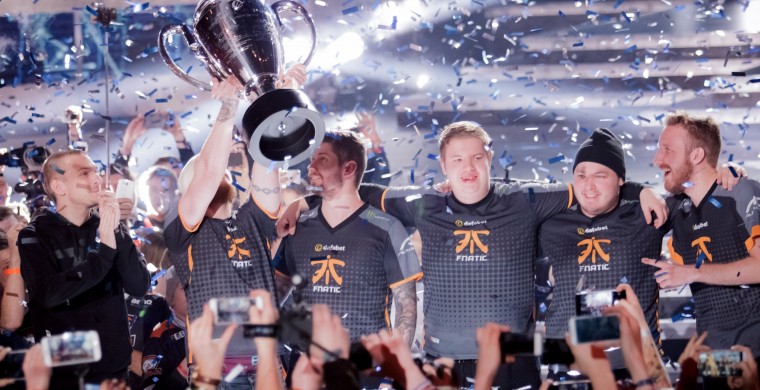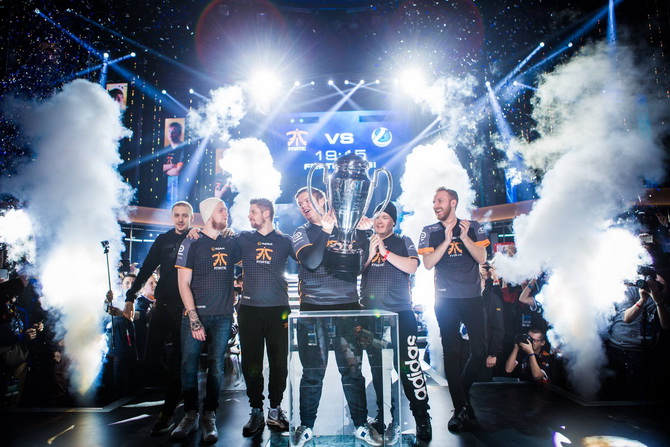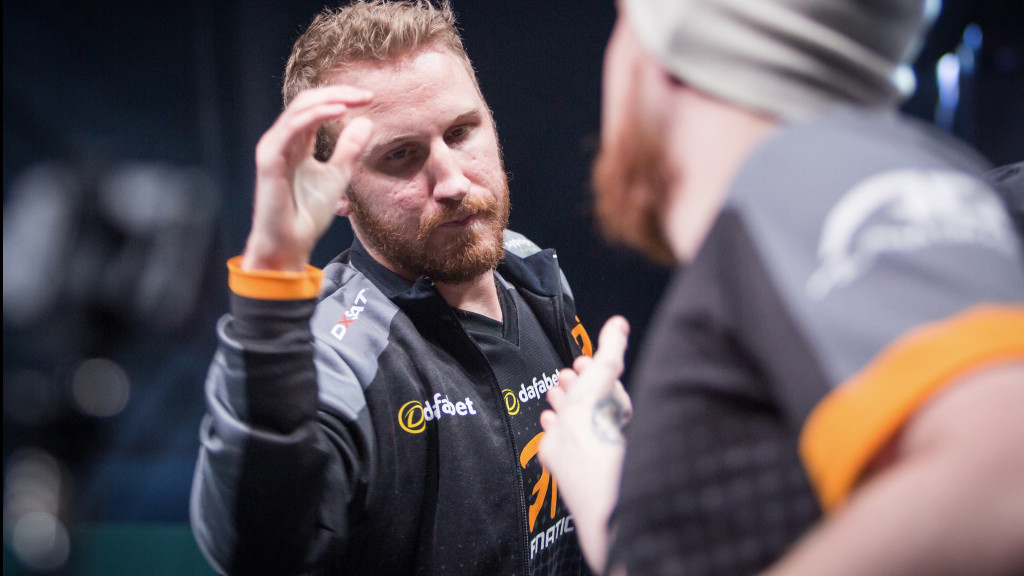Fnatic is one of the most recognized eSports brands in the world today. The company, which is based in London, is riding high after its Counter-Strike: Global Offensive just beat Luminosity Gaming over the weekend to earn an Intel Extreme Masters (IEM) world championship.
Fnatic currently has over 5 million fans around the world, while tens of thousands of online viewers watching its players’ livestreams every day. That’s in addition to the more than 75 international events the teams compete in annually.
The company has worked with brands such as Monster Energy, MSI, AMD, and Zowie to connect with its worldwide audience. Wouter Sleijffers, CEO at Fnatic, talks about the company’s strategy in this exclusive interview.
 How did you end up in eSports?
How did you end up in eSports?
I have an industrial design engineering degree and I worked in semiconductors on the machinery side of things, and then I moved into digital marketing. I came into eSports by accident because I was working for five years with Skrillm, which used to be MoneyBookers. It was an online payment method. The last few years I was doing all the global marketing, and it was actually Fnatic who came to us to present sponsorship opportunities in eSports. That was four years ago that I first learned about eSports and how it was growing in size. I stayed in touch with Fnatic and a year ago I connected with them. Even though I don’t have an eSports background, my role in the company is to build the Fnatic business and brand. Patrik Sättermon, who is our chief gaming officer, works on the competitive side and makes all the player decisions.
What does your job entail?
First and foremost we’re passionate about the Fnatic brand, so it’s one part about what we want Fnatic to be, and then looking at what others have done. I look at what others have done to become this brand and how did they manage it going forward. So, the Fnatic brand and business is a mixture of who we want to be and how does it fit within the eSports audience.
What does Fnatic want to be?
Fnatic wants to embody eSports as a brand that brings the excitement and also the lifestyle elements for eSports together. Fnatic gear is a concrete example of how we transition from a team brand and a lifestyle brand into eSports. That helps us to grow our business beyond being a team brand and working with sponsorships and merchandizing and in-game revenues.
How many sponsors do you work with?
We work with between six to eight sponsors, which is the ideal number because we don’t rely too much on one sponsor or two sponsors from a risk perspective. We can still put a lot of effort and time into these sponsors to make the sponsorships meaningful. Fnatic has a fairly decent number of staff of about 50. That includes paid volunteers as well as 20 or so full-time staff. These are people from the creative side and marketing side. We’re operating more like an agency where we’re servicing our sponsors beyond brand equity to do meaningful and engaging things. The Fnatic brand, which has apparel and merchandizing, has grown very fast, but also the service side is really taking off.

Do your sponsorships work across the various competitive games?
To a large extent, yes, given certain limitations for some publishers. We work with Dafabet as one of our main sponsors. That obviously doesn’t work with Riot because Riot prohibits betting brands to be present in League of Legends, which is all fine. We have worked out a way with Riot and Dafabet on how we do that sponsorship.
But gradually as the titles and the teams themselves become big enough, they can go more towards team-specific sponsorships. Within a year’s time, we’ll back away from having global sponsorships and probably have more team-specific sponsorships. If you look at our Dota team, they’re based in Malaysia, so it could also be more for regional sponsorships for that specific team. While eSports is growing globally, it’s also divided into very strong regions and there are opportunities to work directly with regional partners.
Do you see the evolution of eSports teams becoming more like agencies?
To some extent, yes. It’s more the question for the business itself and how far do they want to bring it. We want to be an agency first for Fnatic. If you look at the Manchester United (soccer team), they’re not known as an agency. But what I’ve heard is they still have about 100 staff working in business development, account management, and there are a bunch of creative people working on campaigns and the brand equity. That’s probably bigger than a good bunch of agencies out there that do creative work.
How do you choose how to expand on the team side of what games you’re going to focus on, or even double down on games that are doing well and adding other teams from other regions?
The first dominating factor is audience. It’s important that we expand our reach and our fan base, and that includes the Fnatic fan base as well as the eSports fan base. So, the first question that usually comes up is “are we just attracting the same kind of audience with that title or not?” After that, there are a bunch of questions that we ask ourselves about the potential of that title and the team. Take Dota for example. That game still has a very good reach, and it’s extremely competitive. We want to be present in Dota, but we also look at the region and if it’s a competitive team.
If it’s a big title that we wouldn’t have the chance to be very competitive on the global level, then we might not go that direction. A big part of our Fnatic brand means we’re competitively successful. After that, there are a whole bunch of things that we look into, including monetization, investments in tournaments, and how good the tournament product is.

How do you target different eSports audiences?
From a business perspective we’re London-based, but from a brand perspective we’d borderless. We’re here for anyone who loves eSports. That’s also the beauty of eSports. It has an appeal across the Far East, the Middle East, Europe, Eastern Europe, Northern America, South America, and now people are talking about eSports gaining traction in Africa. That is one of the things that sets eSports apart from other more traditional sports is that it’s truly global. With Fnatic we’re looking for teams having presence in different parts of the world because that’s what makes up Fnatic, that’s what makes up eSports.
Where does the U.S. fit into Fnatic’s plans?
It’s definitely on the radar and it would absolutely make sense for us to be present there. The U.S. is a very important market for eSports. There’s still a lot to prove in the U.S. market in terms of how they’re going to monetize. The salaries have gone up there for players, etc., but with our twelve years of experience in eSports we’re looking to create a sustainable long-term business from a team perspective. And there’s still some proving to be done for the U.S. market to really make it sustainable and long-term. It’s very lucrative and very promising, no doubt about it. You want to be present there.
How do you differentiate Fnatic from the other brands or teams in eSports?
If you look at it from the sponsor perspective, they love winning teams. We’re still in a winning and losing business, and people love winning teams and winning persons. Secondly, I think it’s very important that we’ve had 12 years of continuous success. There might be successful teams out there, but the investment a sponsor is making with us today is more guaranteed to pay off over a longer period of time with Fnatic than maybe another team out there. Thirdly, is our brand. We would not want to have a sponsor that’s bigger than our own brand, and we’re always honest about that when we speak to sponsors. And then another thing that we focus on is the statistics and data, which is why we partnered with research firm Newzoo. That helps us figure out how to approach the market.

